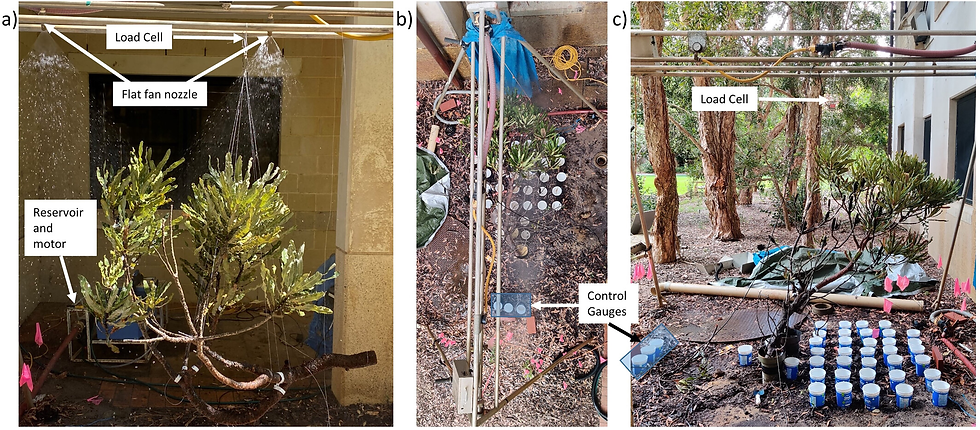Introducing Pour Points!
- sallythompson5
- Dec 3, 2024
- 2 min read
Once again I've let the news archive from our research group get out of date by 18 months - but I'm delighted to restart a series of blog posts with updates on recent research outputs. And this one is a doozy to kick us off with ... meet pour points, introduced to you in this paper by the one and only Dr. Ashvath Kunadi!
What is a pour point? I'm so glad you asked. Mostly because I've been looking for an excuse to share this video for ages! That little stream of water pouring off the branch of this fig tree? That's a pour point.
What's going on ? Rainfall has been intercepted by the canopy, and is routed down the branches towards the main stem. But instead of forming stemflow, it has detached from the branch, and is falling as a concentrated stream of throughfall.
Ashvath spent a lot of time looking for pour points in the field and recreating them experimentally. He found that they were common and easy to identify in the Banksia woodland we studied. They particularly formed where lots of smaller branches converged, or if a branch changed its orientation like in the drawings here:

Ashvath measured water balances on Banksia sections, tracing how much rainfall was stored on branches and how much left as diffuse throughfall, as pour points, and as stemflow.

We found that pourpoints can increase the volume of water delivered to a 10cm diameter area below the canopy by as much as 15 x the rainfall! Soil moisture measurements below pour points showed that this water moved deeper into the soil and increased the proportion of rainfall that infiltrated by a factor of 10 relative to control sites that were not below a pour point. Pour point water fluxes were bigger than stemflow on all trees we sampled.
Pour points had not been clearly defined in the literature before this study, and we are excited to have contributed new understanding to the phenomena that constitute throughfall and help us characterise heterogeneity in soil moisture and maybe even recharge.
This research is complementary to another exciting study - Aryan Puri's hydrodynamic work on rivulets that ultimately feed pour points - which I'll cover in another news update soon.




Comments